
Monarchs and the Forest
The Monarch Butterfly Fund story begins with the story of the monarch and its overwintering home.
Every year, monarchs from across eastern North America migrate south to a very small area of high-altitude forest in Central Mexico where they perch, dormant for several months, protected from freezing weather by the trees. Early scientists studying these overwintering colonies, including one of our founders, Lincoln Brower, and his graduate students, recognized the importance of the Pine-Fir forest ecosystem occupied by the monarchs. Fir trees are locally called oyamel. These forests were the key to the monarch’s survival. But these forests faced numerous threats, from illegal logging, firewood harvesting, forest fires and disease, even cattle grazing. Most of these forests were and still are owned collectively by local communities who rely on this land for income and sustenance. In 1980, the Mexican government established the Wild Reserve and Refuge Zone, protecting the sites during the winter when monarch butterflies overwintered.
Creating a Butterfly Reserve
Recognizing the need for protection, scientists, local governments, civil society organizations, and farmers from across North America joined forces to focus on monarch conservation in Mexico. In 1986 the Monarch Butterfly SPECIAL Butterfly Reserve (MBSBR) was created by a presidential decree. Five separate overwintering sanctuaries were identified, totaling 16,110 ha. 28% of this was designated as a core zone where no logging was allowed. The MBSBR decree was intended to protect butterflies but it was imposed without consulting the communities that lived there, offering no economic alternatives to the legal owners– ejidatarios and indigenous communities.

Lincoln Brower (center) with members of a local community, circa 1980s

John Glendinning, Alfredo Arellano, Jim Anderson, Alfonso Alonso in Sierra Chincua, 1986

Lincoln Brower (center) with monarch butterfly enthusiasts at Cerro Pelón, 1993

Alfonso Alonso in the forest
A Different Approach to Conservation
By the 1990s, after the signing of the North American Free Trade Agreement (NAFTA) and the creation of the Commission for Environmental Cooperation, the TriNational North American Conference on the Monarch Butterfly was convened to tackle the problems of the region from an inclusive perspective. Campesinos and land owners worked with scientists and Civil Society Organizations (CSOs) to understand what could be done to protect the butterflies, the land and the people.

Lincoln Brower and Bill Calvert, monarch specialistes, circa 1990s

Monarch scientists (Bill Calvert, Lincoln Brower and Karen Oberhauser) with local campesinos in 1997

Alfonso Alonso, Karen Oberhauser, Eneida Montesinos, Eduardo Rendón, Lincoln Brower and Eligio García at the North American Conference on the Monarch Butterfly held in Morelia, Nov. 1997
New Conservation Organizations
In 1996, the Monarch Butterfly Sanctuary Foundation (MBSF) formed, teaming scientists with educators and non-profits, to focus on economic development, environmental education, and research, becoming a source of funding for important conservation work in the region. In 1997, the Michoacán Reforestation Fund (MRF ) was created to provide trees for reforestation, and to promote sustainable forestry in the monarch reserve, and within six years commemorated its 1 millionth tree planted. Other organizations formed to address the poverty of the area, such as Alternare with their innovative farmer-to-farmer methodology. By 2001, MBSF began supporting Alternare in their work training farmers in reforestation techniques, organic farming and sustainable development practices.

Michoacán Reforestation Fund (MRF) Logo

Michoacán Reforestation Fund Board Members in 2006 meeting

Monarch Butterfly Sanctuary Foundation (MBSF) logo

Sign at El Rosario with MBSF logo asking people not to litter or catch butterflies & to be quiet
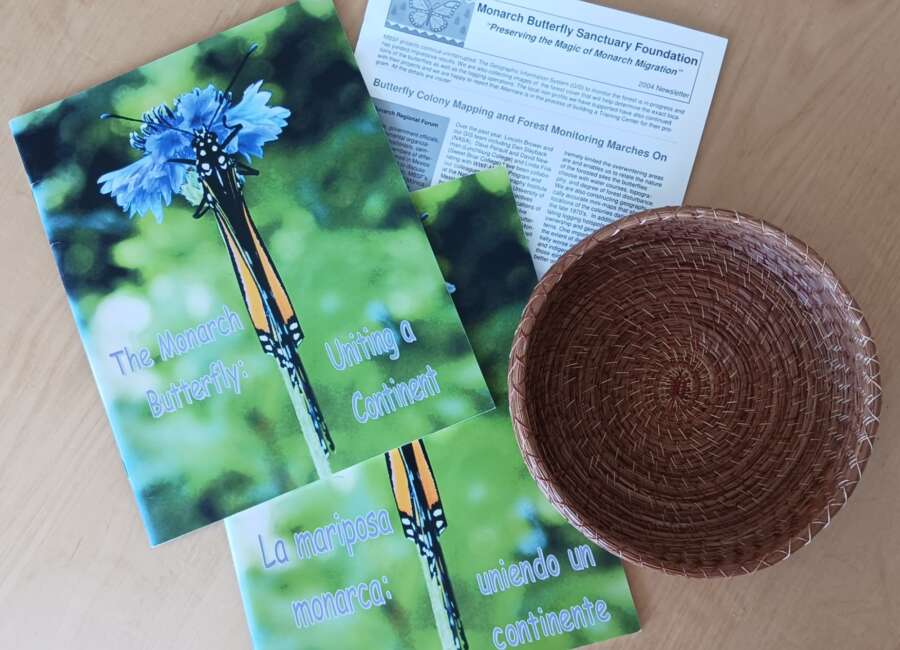
The Monarch Butterfly: Uniting a Continent book, baskets (produced as an economic alternative and available for donors) and MBSF newsletters
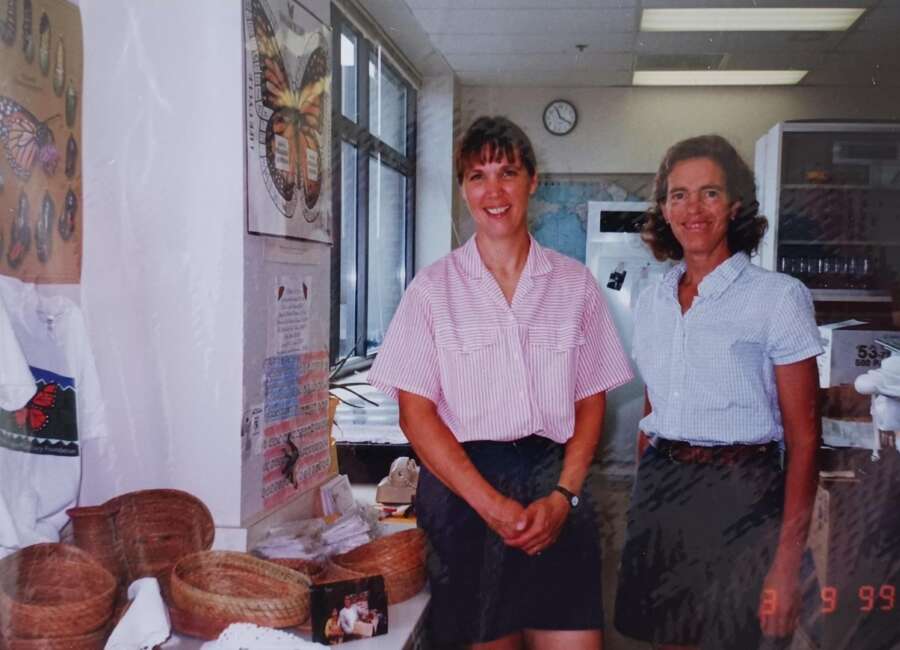
MBSF founders (Karen Oberhauser and Elizabeth Donnelly) bringing the monarch conservation story back to Minnesota, 1999
Expansion of the Reserve
By the late 1990s, it became apparent that the fragmented boundaries of the original butterfly reserve were insufficient and a new contiguous area that protected the watersheds was needed. In partnership with World Wildlife Fund, MBSF supported a proposal to expand the reserve and in 2000, a new decree was signed expanding the protected area to 56,259 ha, (24% as core) renaming it the Monarch Butterfly Biosphere Reserve (MBBR). The new decree also offered a compensation mechanism to local landowners. A detailed explanation of the MBBR's expansion is found here and the compensation mechanism called the Monarch Conservation Fund or Monarch Fund is found here.

Renée González from Fondo Mexican para la Conservación de la Naturaleza (FMCN) and Mónica Missrie, former Monarch Butterfly Program Officer at WWF (1998-2001), signing agreements economic compensation agreements with land owners of the reserve
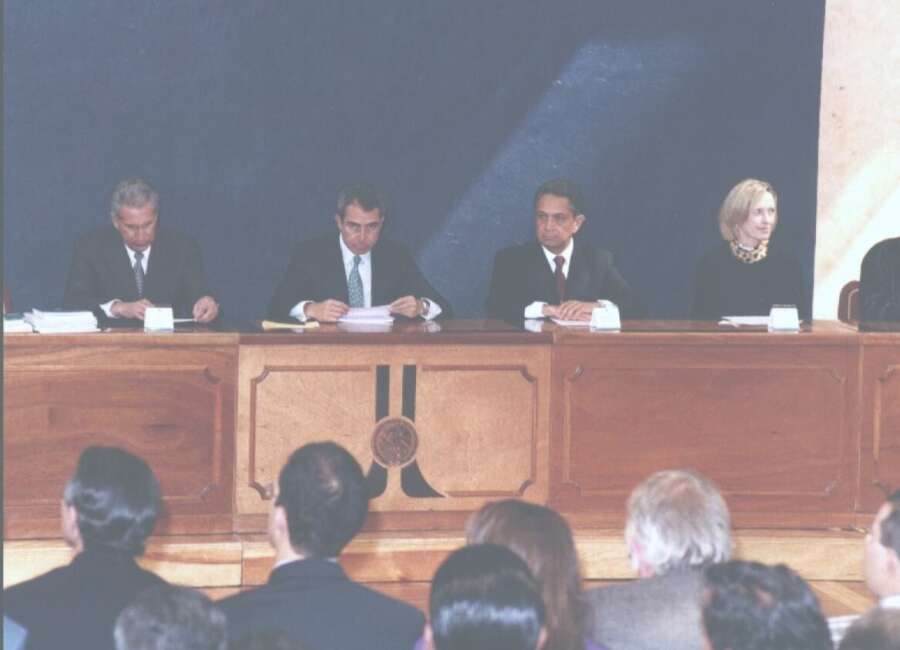
Signing of Decree Los Pinos with President Zedillo (second one from left) and Kathryn Wynn from WWF (far right)
The Monarch Butterfly Fund is Established
Recognizing that conservation efforts in the Monarch Butterfly Biosphere Reserve were better served by a united effort, the MBSF and MRF decided to merge organizations, establishing a new entity - the Monarch Butterfly Fund (MBF). Like its predecessors, MBFs mission continued to foster conservation of North American monarch butterflies and their migration through habitat conservation, research, monitoring, education and support for sustainable community development in and near monarch habitats in Mexico. This mission is reflected in our four initiatives (see “Our Work”) and the MBF continues to be an important source of funding for conservation work in the region, with the majority of funding coming from northern donors.


MBF Annual General Meeting Feb. 19, 2011

MBF Board Members at Annual General Meeting April 2016

MBF Annual General Meeting in Phoenix Nov. 15, 2019
Highlights of Our Work
MBF supports a wide range of projects within our four strategic areas: habitat conservation, scientific research and monitoring, education and outreach, and sustainable development. We support reforestation, citizen science projects, monitoring, environmental education, research on improving reforestation strategies, training of local communities in sustainable practices and many more initiatives. All of our projects are carried out respecting the needs of the communities and involving them as partners in conservation efforts.

Unloading trees for the Reforestation project
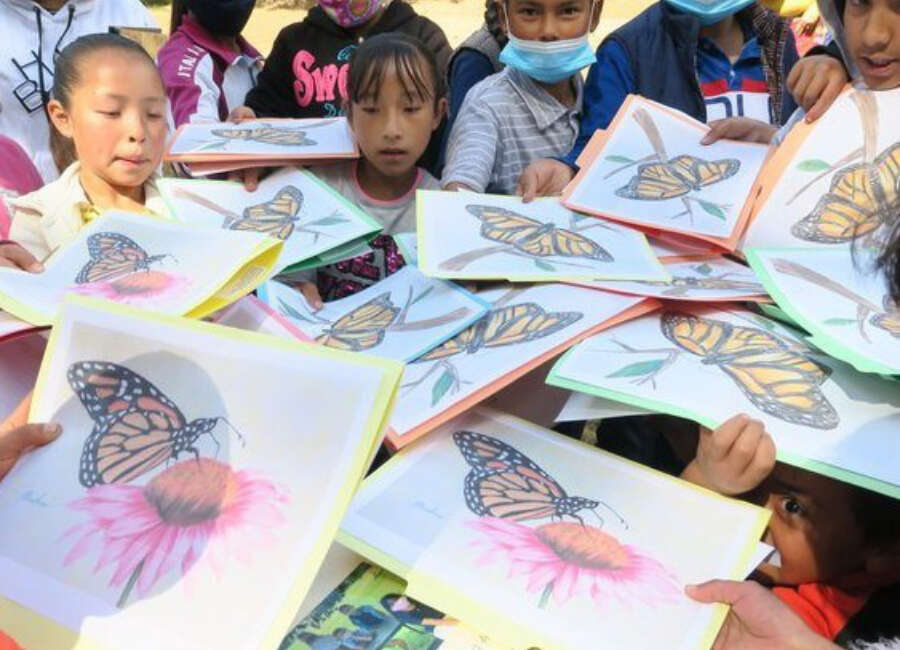
Girls from La Patria Elementary School with monarch activity kit

One of five field guides to the Monarch Butterfly Biosphere Reserve

The Assisted Migration Project team
Long-term Collaborations
Building on the success of earlier collaborations with Alternare, MBF continues to support their important work in the region. MBF has provided funds to strengthen Alternare's Comprehensive Sustainable Development Model that has trained 17 cohorts of campesino instructors who in turn train other campesinos in sustainable practices. MBF has also provided support for Alternare's yearly reforestation projects with local communities.

Alternare's training center

Workshop participants in Senguio community

Graciela heating tortillas in her new fuel-efficient stove

Mazahua women and man mixing dirt to build a cistern

Alternare facilitated the construction of cisterns for more water management. Portrayed are people putting the finishing touches in a cistern.
Envisioning Future Forests
As climate change threatens the survival of the oyamel forest ecosystem, understanding conditions for optimal reforestation as well as characteristics of successful seedlings are ever more important. Since 2014, MBF has supported a series of Assisted Migration projects aimed at understanding these critical conditions and characteristics. The project has resulted in several important publications and its research continues today.

Production of coyote brush (Baccharis conferta) as nurse plants

Oyamel trees planted under nurse plants at Nevado de Toluca

Oyamel seedlings planted at 2600m

Planting oyamels at 3800m in Nevado de Toluca

Don Pancho in community nursery at La Mesa
Going Strong
Since its inception, MBF and its predecessor organizations have been led by preeminent researchers and conservationists from across the continent, and this tradition continues to this day (see our Current Board). MBF’s important conservation work only happens because of the care and generosity of our donors. We offer our deepest thanks to all our donors for their gifts, large and small. Together we are making a difference, working together to save this phenomenal migratory insect and its habitat for generations to come.
Join our mission with a donation today.

Seedlings are the future of the forest

El Rincon April 2012 – planted seedlings grew on average one meter since placed on the ground in 2010

El Rincon May 2013 – trees ranged 1.8 to 2 meters tall after three years of being planted
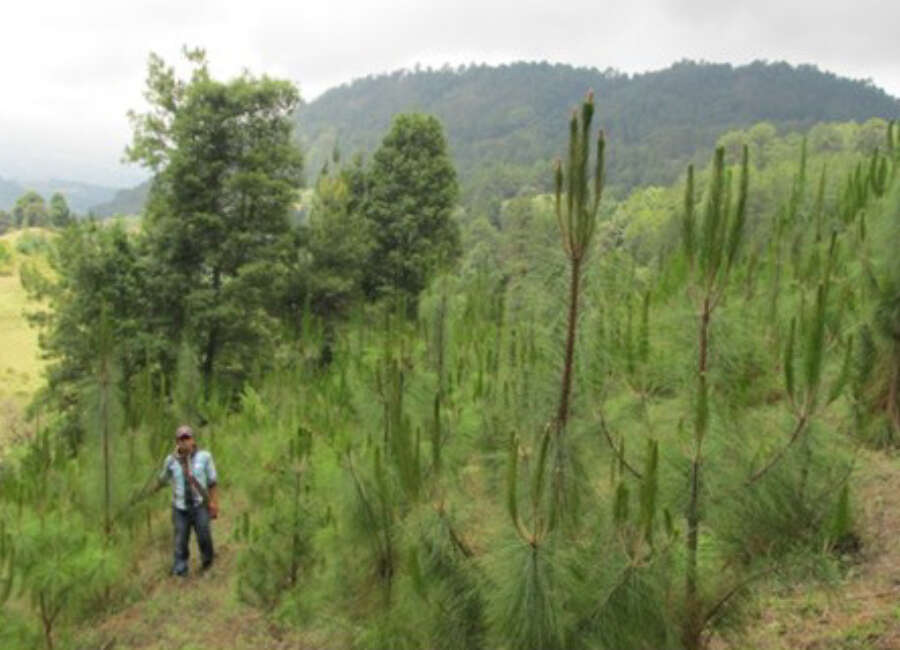
El Rincon June 2014 – trees ranged 2.5 to 3 meters tall after four years of being planted

El Rincon July 2023 – trees ranged 12 to 15 meters tall after 13 years of being planted


